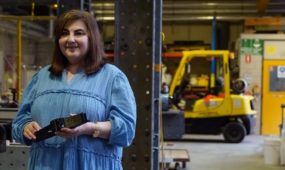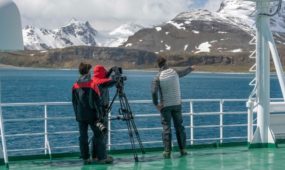Gel cocoon to shield fire fighters trapped by blazes
Technology
A FIRE shield system to protect emergency services personnel trapped by wildfires could be deployed in Europe this summer.

Sign up to receive notifications about new stories in this category.
Thank you for subscribing to story notifications.
Experts are predicting 2016 to be one of the hottest years on record and fire fighters in Europe and North America are preparing for the worst.
The Crew Protection System, developed in South Australia by Bushfire Defence, allows fire fighters in four-wheel-drive vehicles to shelter safely if they are over run by flames.
The unique system uses a super polymer gel to cover the outside of the vehicle’s cabin, protecting occupants from burnovers for up to 12 hours.
The device is also being modified to protect homes, buildings and other infrastructure.
Bushfire Defence is in talks to sell the Crew Protection System to a company in Turkey, which has similar climatic conditions to South Australia, ahead of its fire season.
“When an unexpected wind change occurs during a fire, the flanks can become the new fire front and fire fighters can become trapped in what is known as the dead-man zone,” said Bushfire Defence Managing Director and co-inventor Matt Wegener.
“The protection that is currently available to these guys in these specific vehicles is just not adequate enough. These vehicles are not like trucks that carry lots of water and have a water spray system to protect the cabin. We saw a need to change this.
“This system has become a way to help fire fighters, especially those in light-weight quick response vehicles, hide from these burnovers.”
The gel acts as a protective blanket and thermal insulating barrier keeping the inside of the cabin smoke free ensuring the temperatures are stable.
South Australia’s dry climate makes it highly susceptible to wildfires in the summer and it experiences almost seven major fires a decade.
Last year’s Pinery Fires, just north of the state’s capital Adelaide, claimed two lives and burned through more than 85,000 hectares of farmland.
Previous methods of sheltering involved fire fighters relying only on heat-reflective pull-down blinds on the inside of the vehicle to help reduce the radiant heat and then covering themselves with a fire resistant heat reflective blanket.
Wegener said Turkey was prone to deadly forest fires, which had burned tens of thousands of hectares of land and claimed a number of lives in the past decade.
The system is fitted with a vessel containing 30 litres of a Petroleum Hydrocarbon gel mixed with Polyacrylate Polymer that is imported from the United States and is able to hold 400 times its own weight.
When the device is activated, the gel takes 30 seconds to cover the cabin including the tyres. Fire fighters are safe inside the vehicle for 12 hours after the gel is dispersed.
“At a molecular level there is 400 parts water to one part of polymer,” Wegener said.
“It’s like sticky water that has a higher evaporation point due to the polymer. Where water evaporates around 50 degrees, relative to a few environmental factors, this substance evaporates at around 1150 degrees.”
To fit out one of the vehicles costs $15,000, but once attached the vessel of gel lasts for two years.
“We perform a 12-month re-maintenance on the system, which needs to be performed by an accredited technician,” Wegener said.
After the system has been used, it is flushed and replaced with a new vessel filled with the gel which is then pressurised to over 1350 KPA.
The product is made in accordance to Australian standards for fire protection on mobile and transportable equipment and Wegener is confident it will be a success in Europe.
Wegener and Bushfire Defence co-founder Scott Chandler are also looking for other applications of the gel.
“We do also use the gel for residential and rural protection,” Wegener said.
“Not from the same system as that on the vehicle, but through normal external fire sprinkler systems and end of fire hoses running off fuel pumps.
“We are also looking at applications of the gel for mobile phone towers, buildings and other structures.”
Jump to next article



